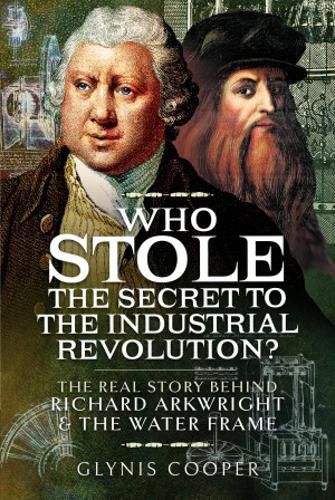Readings Newsletter
Become a Readings Member to make your shopping experience even easier.
Sign in or sign up for free!
You’re not far away from qualifying for FREE standard shipping within Australia
You’ve qualified for FREE standard shipping within Australia
The cart is loading…






English schoolchildren are taught that Sir Richard Arkwright ‘invented the water-frame and was the father of the Industrial Revolution and the factory system.’ That is simply not true. The water-powered spinning frame and the ‘modern factory system’ were pioneered in Italy over 300 years before Richard Arkwright was born. This book tells the story of how the Industrial Revolution in textile manufacture really began. Not in England with Richard Arkwright and the English cotton industry, but in Italy, with Italian Renaissance engineers and the Italian silk industry. Proof lies in the achievements of medieval Italian engineering, English archives and English legal case records. Italy was the leading technological power in Europe from the 13th to the 17th centuries. The Italian Renaissance and the devastation caused by the Black Death (1347-49) brought forth a wealth of technological innovation and invention and the Italians automated much of the production of silk fabrics, using water as their power source, because there were no longer enough people left alive to carry out the work. English organzine was inferior to Italian organzine. In the first recorded case of industrial espionage a young Derby engineer resolved to steal Italian silk manufacturing secrets. Water powered silk throwing machinery, reconstructed by John Lombe from his stolen plans and drawings, provided the blueprint for water powered cotton spinning machinery (water frame), and Cromford Mill, (built 1771), was modelled on Derby Silk Mill (built 1719). This book marks the 300th anniversary of John Lombe’s premature death. Part of the mystery surrounding his actions is why has the truth been concealed for so long and why has the Italian connection remained unacknowledged? It is time to place this episode of history in a proper context, to set the record straight, and to fully acknowledge the part played by Italy in the English Industrial Revolution. AUTHOR: Glynis Cooper’s family has its roots in the industrial millscapes of Manchester. She was born in Stockport, but she grew up near Bury St Edmunds and subsequently spent ten years living and working in Cambridge before returning to Manchester. Her parents were writers who inspired her enthusiasm for the written word. Glynis, who loves islands and the open countryside, trained in the dual disciplines of librarianship and archaeology. She enjoys reading, researching and writing local histories, travelling and playing chess.
16 b/w illustrations
$9.00 standard shipping within Australia
FREE standard shipping within Australia for orders over $100.00
Express & International shipping calculated at checkout
English schoolchildren are taught that Sir Richard Arkwright ‘invented the water-frame and was the father of the Industrial Revolution and the factory system.’ That is simply not true. The water-powered spinning frame and the ‘modern factory system’ were pioneered in Italy over 300 years before Richard Arkwright was born. This book tells the story of how the Industrial Revolution in textile manufacture really began. Not in England with Richard Arkwright and the English cotton industry, but in Italy, with Italian Renaissance engineers and the Italian silk industry. Proof lies in the achievements of medieval Italian engineering, English archives and English legal case records. Italy was the leading technological power in Europe from the 13th to the 17th centuries. The Italian Renaissance and the devastation caused by the Black Death (1347-49) brought forth a wealth of technological innovation and invention and the Italians automated much of the production of silk fabrics, using water as their power source, because there were no longer enough people left alive to carry out the work. English organzine was inferior to Italian organzine. In the first recorded case of industrial espionage a young Derby engineer resolved to steal Italian silk manufacturing secrets. Water powered silk throwing machinery, reconstructed by John Lombe from his stolen plans and drawings, provided the blueprint for water powered cotton spinning machinery (water frame), and Cromford Mill, (built 1771), was modelled on Derby Silk Mill (built 1719). This book marks the 300th anniversary of John Lombe’s premature death. Part of the mystery surrounding his actions is why has the truth been concealed for so long and why has the Italian connection remained unacknowledged? It is time to place this episode of history in a proper context, to set the record straight, and to fully acknowledge the part played by Italy in the English Industrial Revolution. AUTHOR: Glynis Cooper’s family has its roots in the industrial millscapes of Manchester. She was born in Stockport, but she grew up near Bury St Edmunds and subsequently spent ten years living and working in Cambridge before returning to Manchester. Her parents were writers who inspired her enthusiasm for the written word. Glynis, who loves islands and the open countryside, trained in the dual disciplines of librarianship and archaeology. She enjoys reading, researching and writing local histories, travelling and playing chess.
16 b/w illustrations